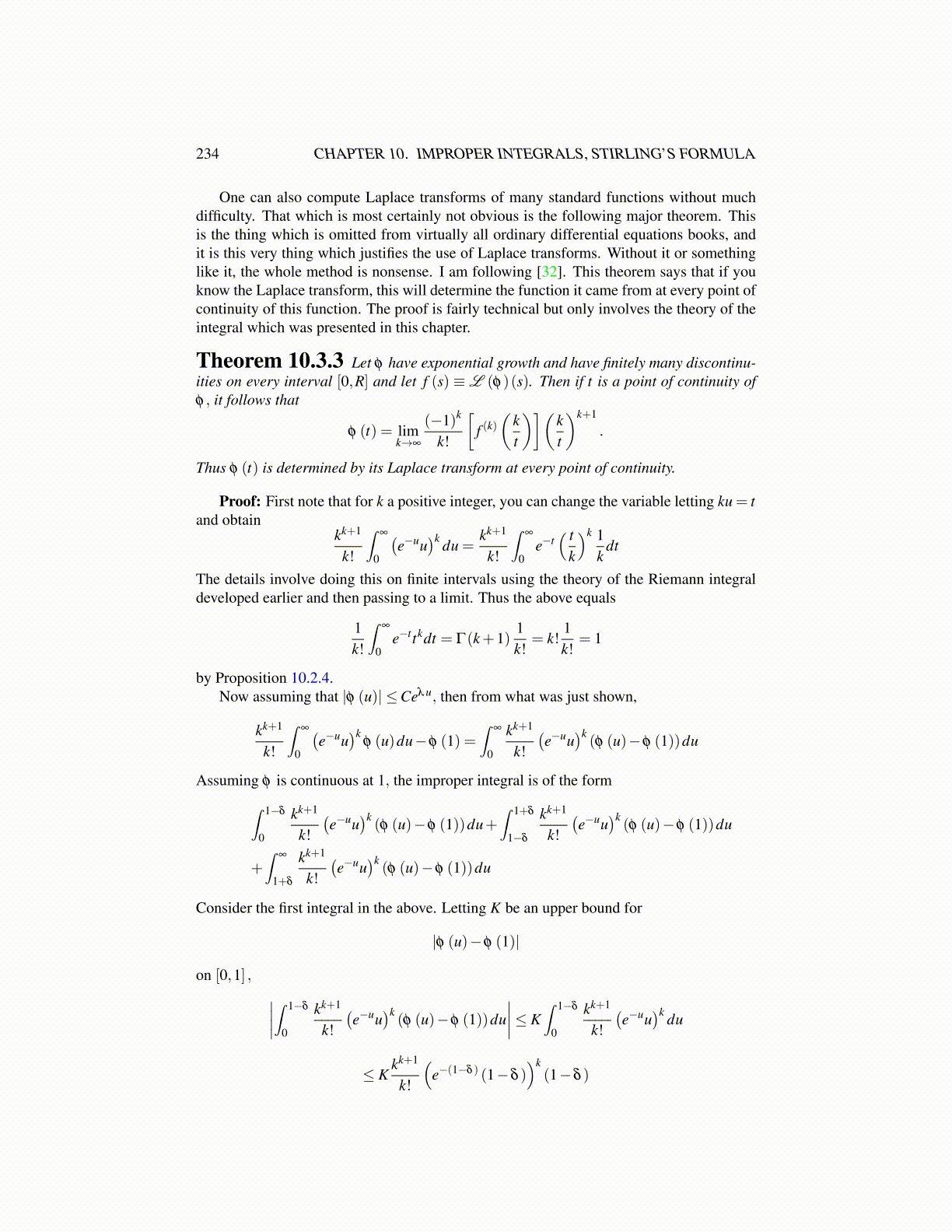
234 CHAPTER 10. IMPROPER INTEGRALS, STIRLING’S FORMULA
One can also compute Laplace transforms of many standard functions without muchdifficulty. That which is most certainly not obvious is the following major theorem. Thisis the thing which is omitted from virtually all ordinary differential equations books, andit is this very thing which justifies the use of Laplace transforms. Without it or somethinglike it, the whole method is nonsense. I am following [32]. This theorem says that if youknow the Laplace transform, this will determine the function it came from at every point ofcontinuity of this function. The proof is fairly technical but only involves the theory of theintegral which was presented in this chapter.
Theorem 10.3.3 Let φ have exponential growth and have finitely many discontinu-ities on every interval [0,R] and let f (s) ≡ L (φ)(s). Then if t is a point of continuity ofφ , it follows that
φ (t) = limk→∞
(−1)k
k!
[f (k)(
kt
)](kt
)k+1
.
Thus φ (t) is determined by its Laplace transform at every point of continuity.
Proof: First note that for k a positive integer, you can change the variable letting ku = tand obtain
kk+1
k!
∫∞
0
(e−uu
)k du =kk+1
k!
∫∞
0e−t( t
k
)k 1k
dt
The details involve doing this on finite intervals using the theory of the Riemann integraldeveloped earlier and then passing to a limit. Thus the above equals
1k!
∫∞
0e−ttkdt = Γ(k+1)
1k!
= k!1k!
= 1
by Proposition 10.2.4.Now assuming that |φ (u)| ≤Ceλu, then from what was just shown,
kk+1
k!
∫∞
0
(e−uu
)kφ (u)du−φ (1) =
∫∞
0
kk+1
k!(e−uu
)k(φ (u)−φ (1))du
Assuming φ is continuous at 1, the improper integral is of the form∫ 1−δ
0
kk+1
k!(e−uu
)k(φ (u)−φ (1))du+
∫ 1+δ
1−δ
kk+1
k!(e−uu
)k(φ (u)−φ (1))du
+∫
∞
1+δ
kk+1
k!(e−uu
)k(φ (u)−φ (1))du
Consider the first integral in the above. Letting K be an upper bound for
|φ (u)−φ (1)|
on [0,1] , ∣∣∣∣∫ 1−δ
0
kk+1
k!(e−uu
)k(φ (u)−φ (1))du
∣∣∣∣≤ K∫ 1−δ
0
kk+1
k!(e−uu
)k du
≤ Kkk+1
k!
(e−(1−δ ) (1−δ )
)k(1−δ )